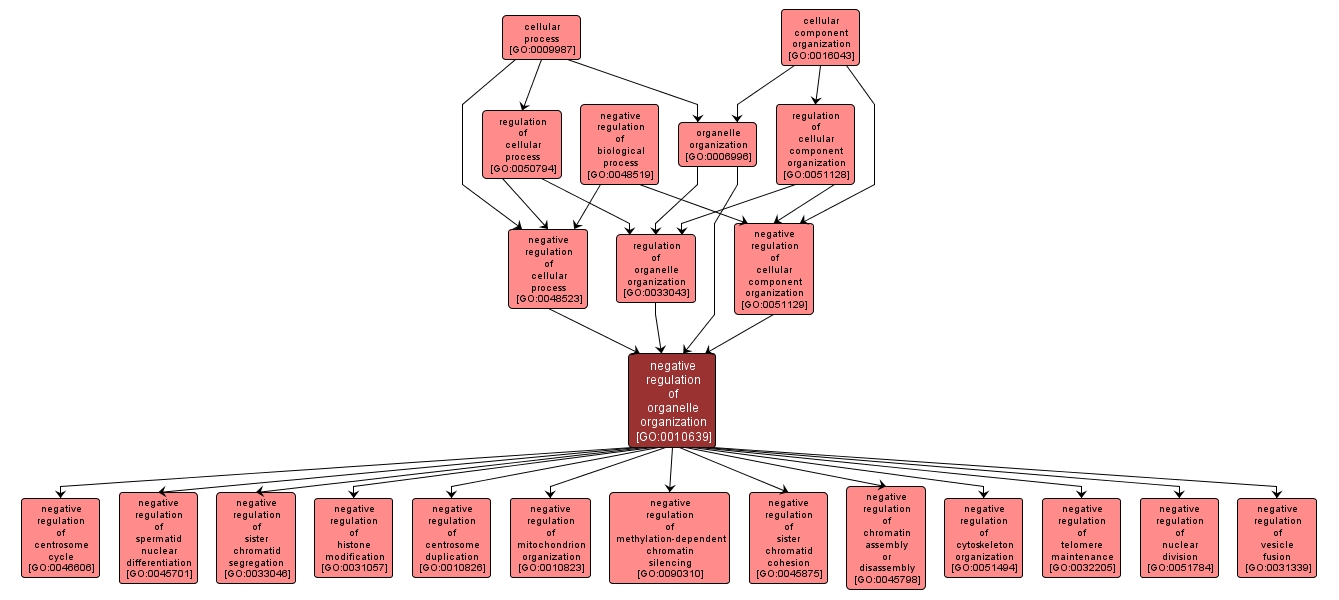GO TERM SUMMARY
|
| Name: |
negative regulation of organelle organization |
| Acc: |
GO:0010639 |
| Aspect: |
Biological Process |
| Desc: |
Any process that decreases the frequency, rate or extent of a process involved in the formation, arrangement of constituent parts, or disassembly of an organelle. |
Synonyms:
- negative regulation of organelle organization and biogenesis
|
|

|
INTERACTIVE GO GRAPH
|














